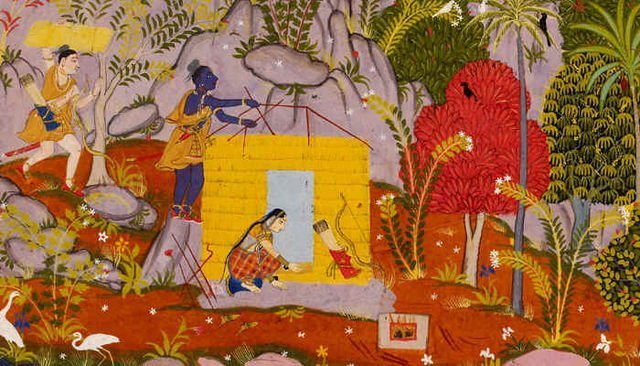Let’s explore the answer to the question “Why was Rama exiled”
The story of Rama, the protagonist of the Hindu epic Ramayana, is one of the most enduring tales of Indian mythology. Rama, the prince of Ayodhya, is exiled by his father, King Dasharatha, along with his wife Sita, and brother Lakshmana. The story of Rama’s exile is filled with trials, tribulations, and transformation. But why did King Dasharatha decide to exile his beloved son? In this article, we will explore the tragic mistake that led to Rama’s exile, and how his journey transformed him into a hero.
The Decision of King Dasharatha: A Tragic Mistake
King Dasharatha was a just and fair ruler who loved his sons dearly, especially Rama, his eldest. Dasharatha had promised his youngest wife, Kaikeyi, that he would grant her two boons as a reward for her services. Kaikeyi, who was jealous of Rama and wanted her son Bharata to become the king, demanded that Dasharatha fulfill his promise and exile Rama for fourteen years. Despite his protestations, Dasharatha had to comply with her wishes to keep his word.
The decision to exile Rama was a tragic mistake that had far-reaching consequences. It not only caused immense pain to Dasharatha, who died of grief soon after but also created a rift in the royal family. Rama, who had always been loyal to his father and never questioned his decisions, accepted his fate with grace and humility. He left Ayodhya without any resentment or bitterness, knowing that it was his duty to obey his father’s command.
Kaikeyi, who had been blinded by her ambition, soon realized the gravity of her actions. She begged Rama to forgive her and asked him to return to Ayodhya. But Rama, who had taken a vow to fulfill his exile, refused to break his word. He told Kaikeyi that he would return only after completing his fourteen years of banishment.
Rama’s Exile: A Journey of Trials and Transformation
Rama’s exile was a journey of trials and transformation that tested his character and resilience. He faced numerous challenges and obstacles in the wilderness, including demonic beings and treacherous demons. But he overcame them all with his courage, wisdom, and humility.
Rama’s journey was not only a physical one but also a spiritual one. He learned the art of war from the great sage Vishwamitra and acquired divine weapons from the gods. He also met numerous sages, saints, and ascetics who imparted valuable lessons in morality, ethics, and spirituality.
But perhaps the most significant transformation that Rama underwent was his role as a husband. His wife Sita was abducted by the demon king Ravana, and Rama had to rescue her from his clutches. This quest led him to form alliances with the monkey king Sugriva and his general Hanuman. Together, they waged a fierce battle against Ravana’s army and ultimately defeated him.
But Rama’s reunion with Sita was not the end of his trials. He faced another test of his character when he returned to Ayodhya. There he learned that his subjects were questioning Sita’s purity, and he had to make a difficult decision. Despite his love for Sita, Rama banished her to the wilderness, where she gave birth to their twin sons.
Rama’s exile was a journey of transformation that tested his character and taught him valuable lessons in morality, ethics, and spirituality. It made him a hero who was revered for his courage, wisdom, and humility.
In conclusion, the story of Rama’s exile is one of the most enduring tales of Indian mythology. It is a tragic tale of a father’s mistake, a son’s sacrifice, and a journey of trials and transformation. Rama’s exile taught us valuable lessons in morality, ethics, and spirituality. It showed us that even in the face of adversity, one can emerge victorious if one has courage, wisdom, and humility. The story of Rama’s exile is a timeless tale that will continue to inspire generations to come.
Image is a painting from British Library 17th century manuscript of Mewar Ramayana

